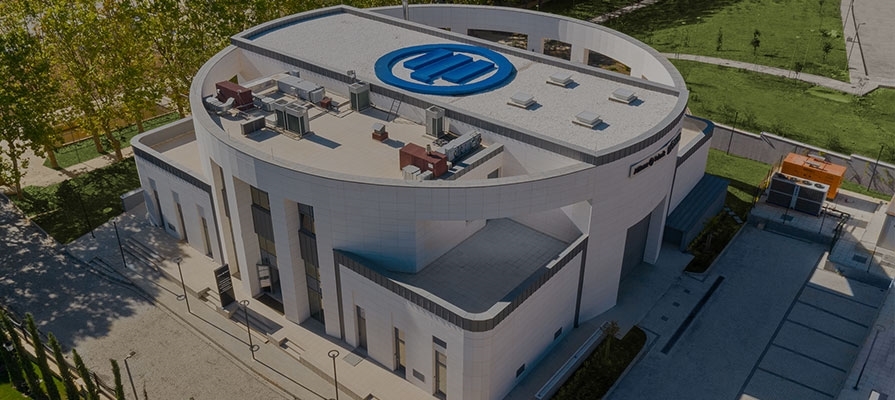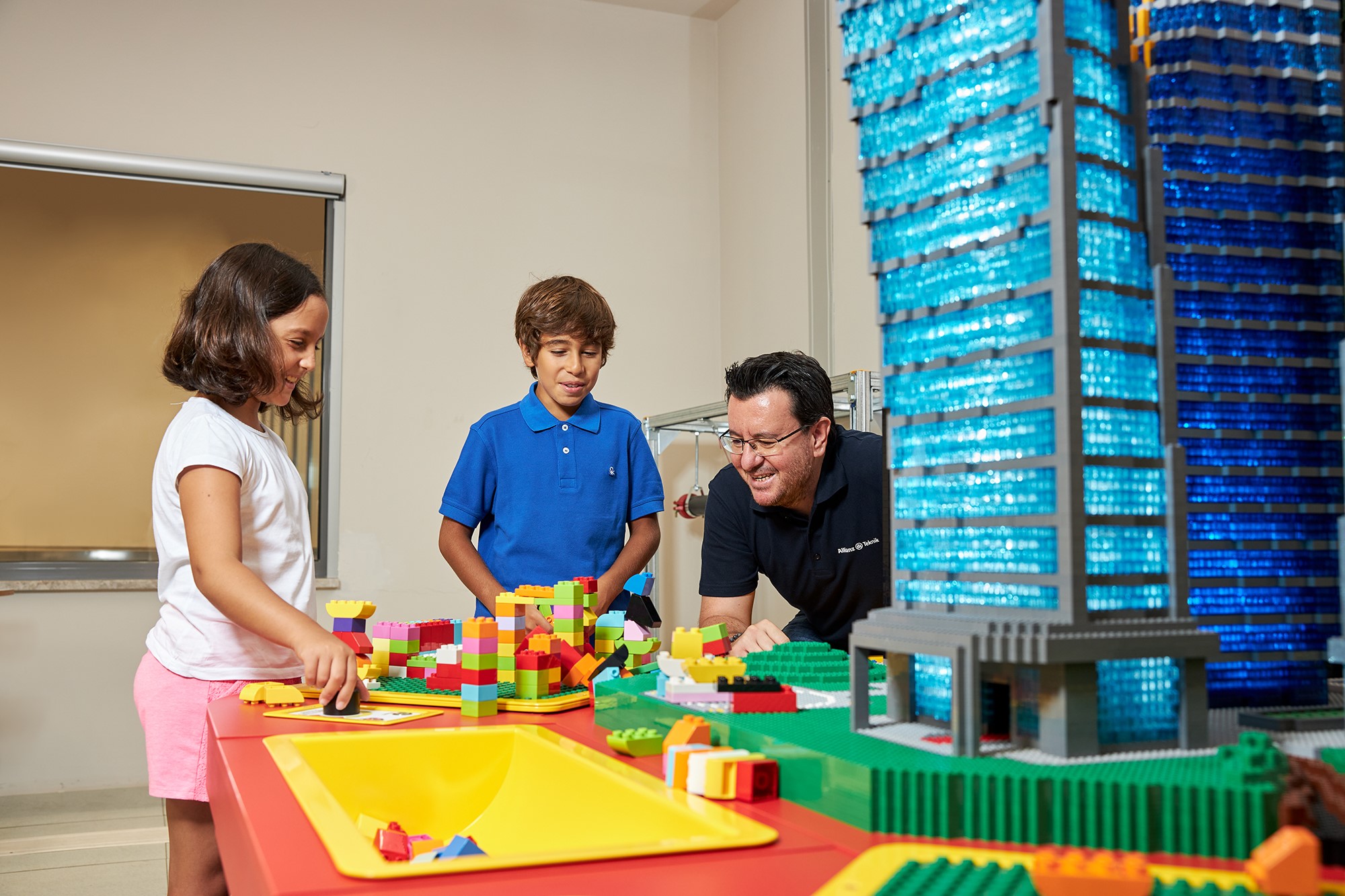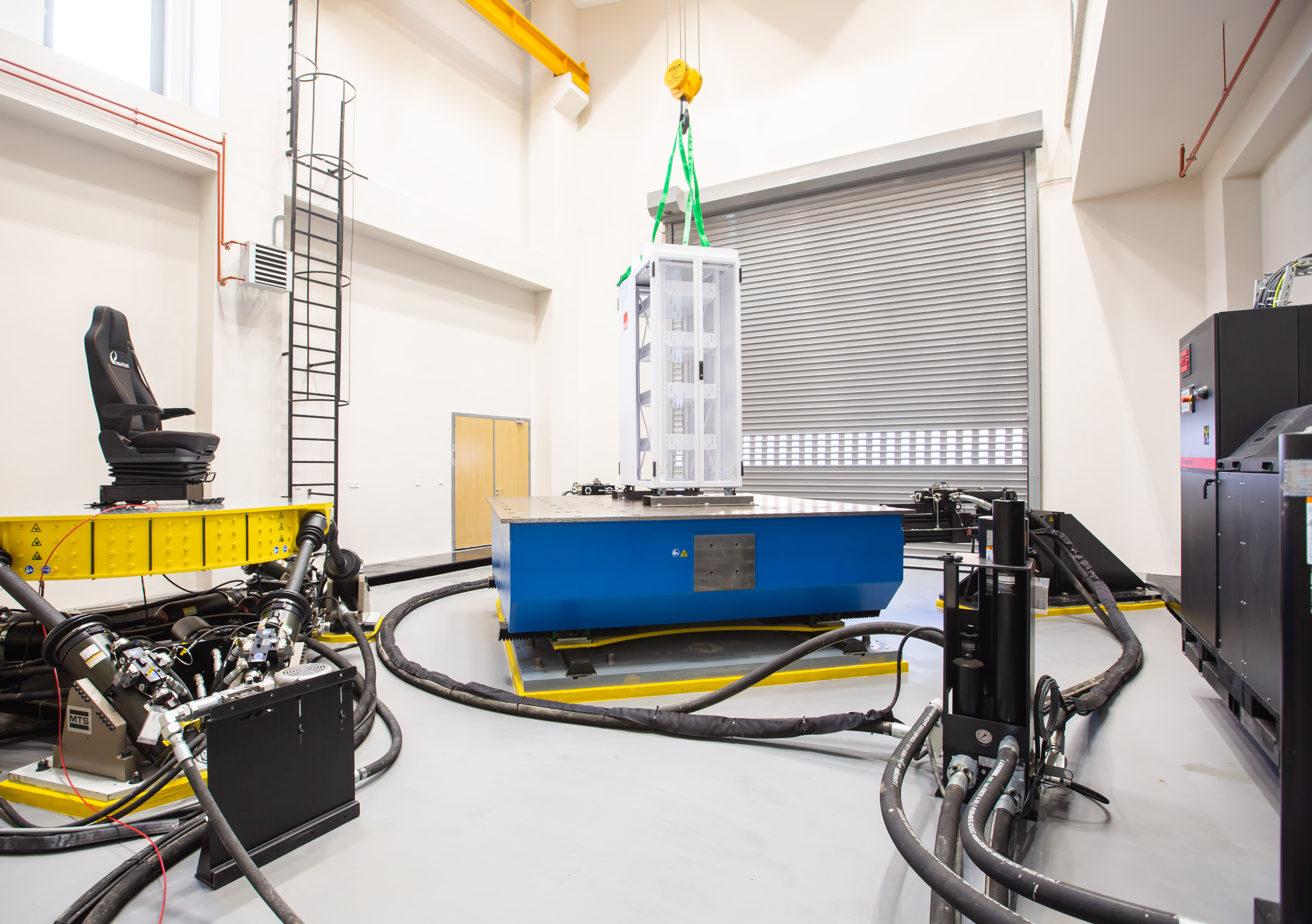
Allianz, one of the strongest insurance and finance groups in the world, provides services in 70 countries. Under the umbrella of Allianz, which marks its 100th anniversary in Turkey; there are the following companies: Allianz Sigorta in non-life insurance line, Allianz Yaşam ve Emeklilik and Allianz Hayat ve Emeklilik in private pension and life insurances line.
Allianz Turkey cooperates with EEC as a solution partner for the installation and maintenance of safety of life and property systems of its operational hub "Allianz Campus" in İzmir and "Allianz Teknik Earthquake & Fire Testing and Training Center".
Dr. Ceyhun Eren, Risk Engineering and Allianz Teknik Director at Allianz Turkey is a civil engineer specialized in structural earthquake engineering, behaviors of buildings during earthquakes and possible damage estimation methods, following the completion of his undergraduate, master's and doctorate studies at the Boğaziçi University. He is the Chairman of the Business Continuity Committee of the Association of Insurance and Reinsurance Companies of Turkey, the former Chairman of the Risk Engineering Committee and a member of the Turkish Fire Protection Association (TÜYAK). He delivers lectures on Business Continuity Management System, Technical Risks Management, Fire and Earthquake Engineering at various educational institutions, including the Turkish German University and the Turkish Insurance Institute Foundation (TSEV).
We met with Dr. Ceyhun Eren at the Earthquake & Fire Testing and Training Center founded by Allianz at the Beykoz Campus of the Turkish German University, and talked about his opinions regarding the disasters experienced in our country, developments in the insurance sector and their cooperation with EEC.
I am very pleased with your request to do an interview with me because I will be happy to inform you about Allianz Teknik and to present my findings and suggestions regarding the steps that can be taken after the painful disasters that we experienced in our country.
“Allianz Teknik” is the group's 3rd testing center in the world. In fact, the materials laboratory that was first founded in Berlin in the 1930s and later moved to Munich investigated the root causes of damage to wind turbines and solar panels in the field of renewable energy and worked on improvement actions, it then started to focus on vehicle safety in the 2000s.
Not only Allianz, but the entire insurance sector plays a very active role in the development of measures that can be taken to improve the risks. If the level of measures is high, you can benefit from the pricing procedures designed to pay lower insurance premiums. For example, in terms of fire engineering, we can say that "the widespread use of sprinkler systems in Turkey is due to the guiding influence of the insurance sector."
Besides, we are the first insurance company in the world to found a laboratory on earthquakes, which is an issue that the insurance sector does not deal with it so much. As Allianz Teknik, we started our operations based on the idea of "Let's contribute to increasing our social risk awareness, raise well-educated engineers with practical training, and provide support to domestic production companies." While we were internally discussing the idea of founding an accredited testing laboratory in Turkey in 2014, even the impacts of the 1999 Earthquake were already forgotten. However, we conclude now that we made a good investment.
We are proud that we are the first and only accredited earthquake laboratory in Turkey. Generally, test centers are like closed boxes. Tests are conducted, but you cannot monitor or follow up the processes. Our difference is that we have designed this 2-floor, 1500 sqm building in a way that all processes can be monitored and followed up. We have taken the opportunity to host a lot of academic tests. Our purpose was to use these advanced engineering tests and simulations in the training. We achieved our purpose. For example, we have a "shaking table" made of legos to attract children's attention. In this way, they are able to observe at a young age how different types of buildings would behave in case of an earthquake.


Accreditation requires "accuracy, confidentiality and impartiality". For us, the aspect of accuracy is crucial because what is important in the tests is that the vibration that you create on computer should be able to be actually converted into motion by the machine with high accuracy, almost 100%; otherwise, it is not very difficult to create an ordinary vibration. However, achieving this level of accuracy is not easy.
For example, there is a 650-ton concrete mass with an area of 100 sqm, at 4-meter depth under our laboratory, and we are keeping this mass suspended 2.5 centimeters from the ground by using 26 air springs (isolators). This special base system is suspended, and all machines are 100% fastened to it. In this way, the highly-real earthquake movements that we created do not reach the ground in any way and do not come back to disrupt the test being conducted by us. Another special point is that we have the capacity to conduct our tests in the third direction as required by international regulations. An earthquake is a wave movement, but it is not just two directions. Unfortunately, with the unpleasant experience in Kahramanmaraş, we witnessed that the waves can be very efficient in the vertical direction as well, which we call the 3rd direction.
Thanks to these characteristics, we were able to provide great support to our domestic producers during the pandemic because the nearest accredited test center is located in Italy and Spain. Here, our producers both gained knowledge and they managed their processes in a more cost-efficient way.
As Allianz Turkey, we attach great importance to risk engineering services. I started to work in the insurance sector under my risk engineering title. I still continue to manage the Risk Engineering Department of Allianz Insurance. Before insuring a facility, we perform a risk analysis study. We can say that this analysis is mainly focused on fire, but in all the coverages provided by us, even earthquakes, floods, landslides and snow weight are a part of this analysis. In addition, we have our own risk analysis format based on occupational safety, which we have developed in the course of time. According to a mathematical infrastructure that we created, the scores of each facility for different risk groups are automatically calculated. We have an automatic format that can immediately offer alternative suggestions based on the answers given to certain critical questions.
Since I have been doing this job for many years, I can say that the quality of a risk analysis report is determined by the recommendations presented as a result. The critical point is to do this job properly during the field work and to have sufficient knowledge. At the time when I was the founding chairman of the Risk Engineering Committee of the Insurance Association of Turkey, we set out on our path with the intention that if the risk engineers of all insurance companies in Turkey could act together, "we would make a great contribution to our industry in improving its risks." For this purpose, it is required to first make a structural analysis of the building and then focus on eliminating the causes of fire, both general and specific to the line of activity.
However, as an insurance company, our major experience is the causes of damage and how it results. For example, if we look at it from the perspective of fire, I can say that reviewing the actual fire damages is the most important source of nutrition for us because we are able to reflect this experience directly to our customers. If we talk about active measures, at this point, certain assessments are made such as design control, i.e. whether the installed detection system will really work, whether it complies with the Regulation on Fire Protection of Buildings. In this way, we automatically conduct this control because the EN norms are accepted as the fundamental norms.
Maintenance works for the safety of life and property systems is one of the issues that we most frequently encounter deficiencies and for which we most frequently issue warnings for taking measures. We often encounter negative cases such as detectors being turned off due to false alarms or not even knowing the location of the detection system panel. Unfortunately, this issue is neglected because investors think of fire detection as a one-time system. For this purpose, we are implementing projects that we call "risk incentives". We are trying to explain to our customers that we, as Allianz Turkey, can support the process of both installing and maintaining these systems in accordance with the standards. Unfortunately, it seems that there is still a long way to go for the importance of maintenance to be understood in our country.
We identify the steps required to be taken, act as a guide in the elimination of deficiencies and conduct field checks, but we do not perform a full inspection because this is actually an important risk that the company must manage and act consciously.
I think that the cooperation to be made with the companies like you that are specialized in safety of life and property systems is very important in increasing fire safety awareness in our country. Both I personally and our company are very open to this type of cooperation.
We always emphasize that the design and installation of such systems, which require high engineering knowledge and should not be taken lightly, should be done by the companies and experts having experience and competency. I have been a member of TÜYAK for many years, where I also had the opportunity to serve as a member of board of directors for a while. This "professional competency" issue, which I always emphasized there as well, is very critical. Although our main task as insurers seems to be to compensate for a major damage after it occurs, it is also our task to make a preventive contribution before the damage occurs. This was a remarkable purpose taken into consideration in founding this center.
In this regard, we have a very good cooperation with EEC since 2019. In particular, we attach great importance to participating in your successful operations in industrial zones and being able to reflect our assessments in the field from the perspective of an insurer. There might be many more significant steps that we can take by working together to raise the awareness of our industrialists and to properly install these systems.
In particular, the concept of "fire consultancy" is required to be developed, and studies aimed at reducing certain risks should be conducted at the design stage before these systems are installed. For example, risk management steps are now known, and we see that they are implemented excellently, but I regret to say that we are late in terms of timing. Unfortunately, after the factory is designed, construction is completed and even the production starts, they call us for risk analysis saying "let's buy an insurance policy". When it is too late, the efficiency of the measures taken remains lower. It is obvious how important the details such as whether the building was designed in accordance with the field of activity and whether suitable building materials were used according to the production operations, are important in terms of fire and earthquake. Another prominent risk is roof and facade insulation products, which greatly increase the risk of fire. In summary, if we can prevent certain risks from the very beginning, the measures that we will take to manage the risk will be more economical and cost-efficient.
That's why I think it is crucial for the insurance sector to cooperate with the companies like you operating in the field of fire engineering both actively and passively.